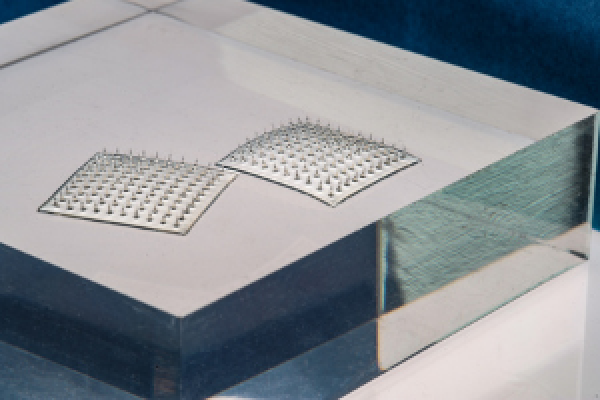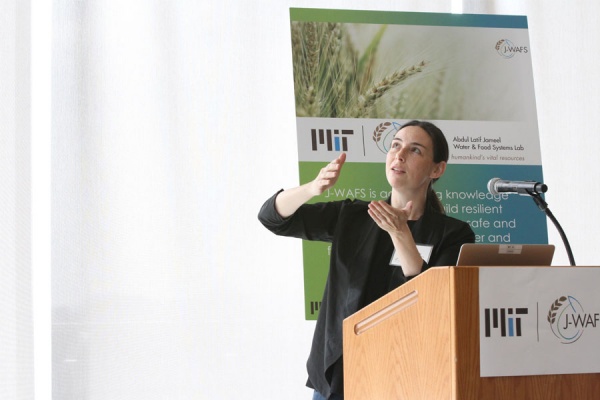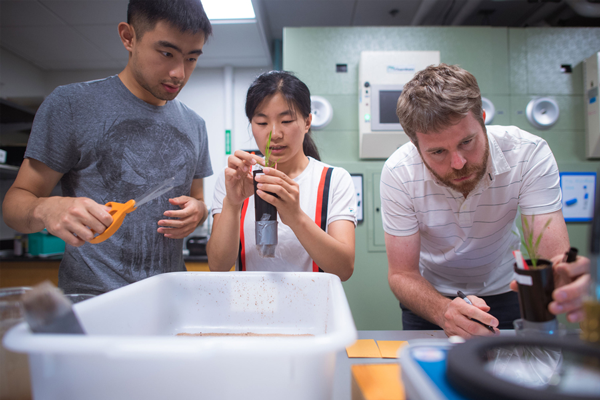Our Research Printed silk-based colorimetric sensors for food spoilage prevention and supply chain authentication
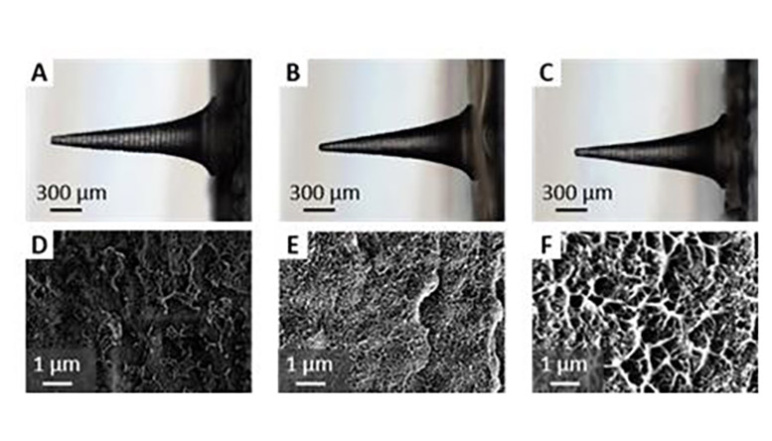
A-C) Optical images of silk needles D–F) SEM images of cross-sectional areas of silk needles
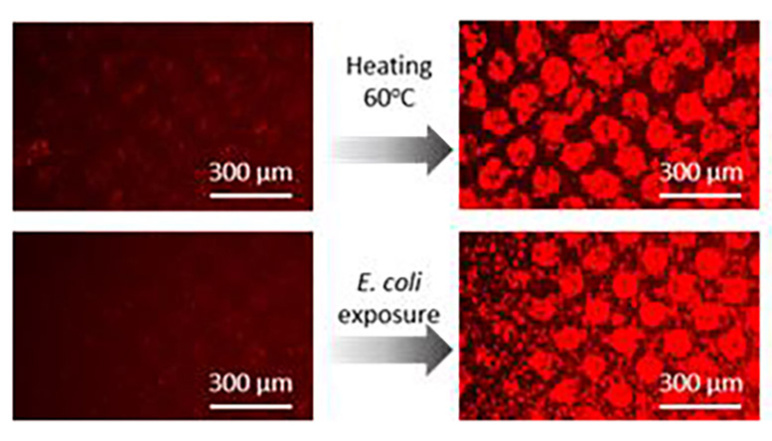
Fluorescence changes of PDA inks when exposed to E. coli
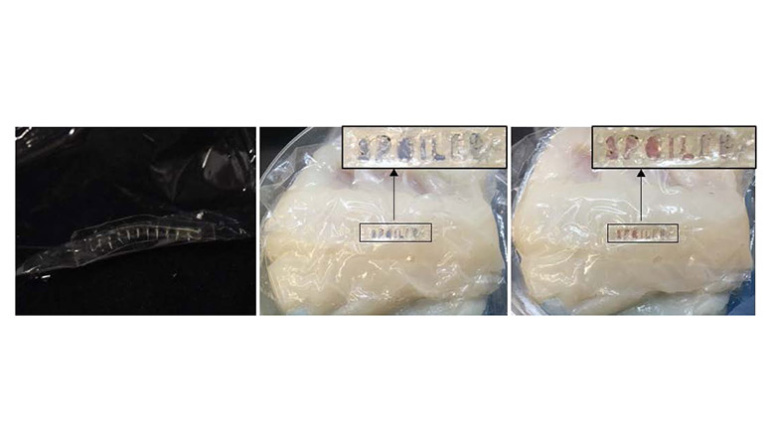
A silk microneedle array penetrating a commercial food wrap. Application to detecting spoiled haddock fillet through the food packaging materials
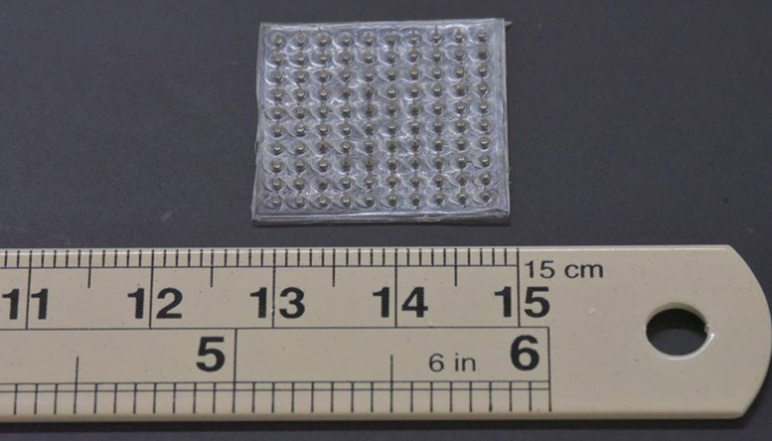
A microneedle array (10 x 1 0 needles; each needle is 1600 um in height, 600 um in diameter; 2 mm spacing between needles)
Principal Investigators
Challenge:
Can we develop a low-cost, scalable sensor to significantly reduce foodborne disease and enhance food safety by detecting food spoilage in real-time?
Research Strategy
- Develop edible bioinks that undergo visible color change upon bacteria exposure
- Design sensors based on the bioinks that display and/or modify colored patterns upon bacteria exposure
- Print sensors as a route to mass production of colorimetric edible sensors for food safety and authentication
- Study market needs and use the findings to inform our research and to create a path to commercialize the technology
Project description
In a world that strives to enhance agricultural output, minimization of food loss from “field to fork” is a major priority to guarantee food security. Globally, approximately one third of the world’s food supply (1.3 billion tons) is wasted annually. As a major contributor to waste, food spoilage is an ethical issue, an economic burden, and an environmental problem. In the United States alone, food safety incidents cost $7B per year in costs associated with notifying consumers, removing food from shelves, and paying damages as a result of lawsuits. Additionally, the CDC estimates that each year roughly 1 in 6 Americans (or 48 million people) get sick, 128,000 are hospitalized, and 3,000 die of foodborne diseases. In developing countries and in the tropics, half of the harvested fruits and vegetables are lost in the food supply chain due to microbial spoilage.
Cost-effective and easy-to-use methods to detect food spoilage, and to inform consumers of spoilage, are critical to address this problem. In this project, the research team is developing an integrated materials-manufacturing platform for low-cost printed colorimetric sensors for food spoilage and authentication, which will be initially validated for bacterial sensing on meat and dairy products. The project integrates the expertise of Prof. John Hart’s lab in Mechanical Engineering and Prof. Benedetto Marelli’s lab in Civil and Environmental Engineering, who are focusing on novel printing technologies and formulation of protein-specific colorimetric inks, respectively. The sensors respond via antibodies’ interaction with a pathogen that results in a color change, which is visible to the naked eye. The antibody can be chosen to respond to a specific antigen target or to a gas, and direct printing enables multiple inks to be printed in a single pattern in order to improve accuracy and sensitivity. The team is initially focusing on the most common and hazardous contaminants, i.e. L. Monocytogenes, E. coli, and Salmonella.
Outcomes
- Synthesized edible silk-based bioinks as sensors for E. coli detection, and fabricated a silk microneedle system that was inserted into contaminated meat to sample food fluids
- The fluid containing E. coli from contaminated food (i.e., fish flesh) was delivered through the porous microneedle structure to the patterned bioinks printed on backside of the needle array, leading to colorimetric change upon E. coli detection
- Developed concepts for radio frequency identification (RFID)-based microneedle sensors, allowing remote data transfer from the microneedle to mobile devices by combining microneedles and carbon nanotubes as a sensing medium
News
Additional Details
Impact Areas
- Food
Research Themes
- Sensors & Monitoring
- Technology & Commercialization
- Transforming Food Systems
Year Funded
- 2018
Grant Type
- Seed Grant
Status
- Completed




